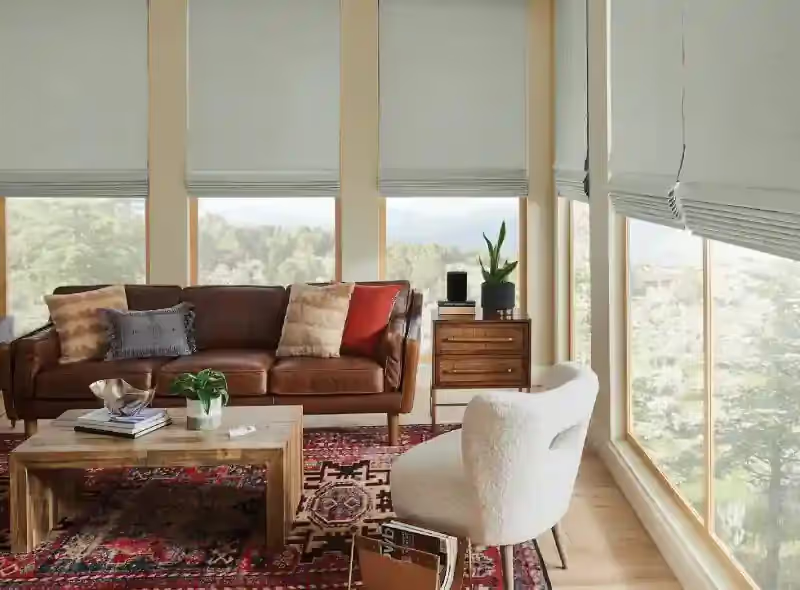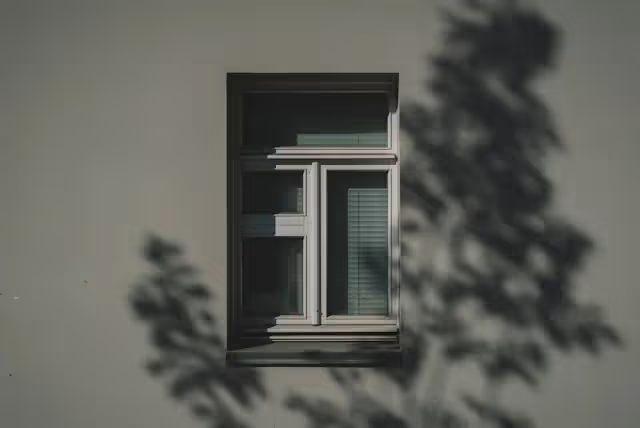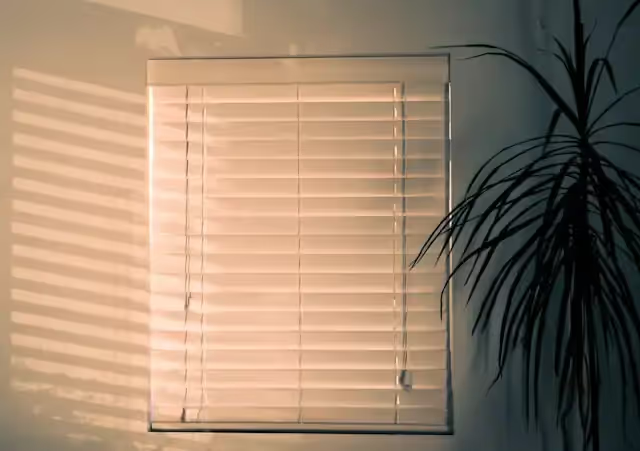Window Shades and Blinds: Everything You Need to Know
Window Shades and Blinds: Everything You Need to Know

Looking for the right window shades? Yeah, it's a pain. I was helping my neighbor pick out blinds last weekend and we must have looked at fifty different options. Half of them looked identical to me, but apparently one was "light filtering" and another was "room darkening" and somehow that justified a $200 price difference.
The whole thing is nuts. You walk into these stores and nobody can give you a straight answer about what actually works. They're all pushing whatever makes them the most commission. Plus, everyone's trying to sell you something expensive.
But here's what nobody tells you: finding the right window shades and blinds doesn't require a design degree or unlimited budget. You just need to understand a few basics and think about what you actually need.
The Basics Nobody Explains Properly
First, let's clear up the confusion between shades and blinds. This matters way more than you'd think.
Window shades are basically fabric or material that covers your whole window as one piece. Picture a window shade rolling up like a scroll - that's the idea. They give you a clean, smooth look and work great for privacy and light control.
Window blinds have individual slats that you can adjust. Think of those horizontal blinds you've seen everywhere - you can tilt the slats to let light in from different angles or close them completely. They're perfect when you want precise control over lighting.
My neighbor Jake has blinds in his home office because he needs to adjust them constantly throughout the day to avoid glare on his computer screen. Meanwhile, my bedroom has blackout shades because I just want darkness when I sleep - no fussing with individual slats.
Why Window Shades Work So Well

Let's talk about the main types of shades and when they make sense.
Roller Shades Are Surprisingly Versatile
Roller shades get overlooked because they seem too simple. Big mistake. These are workhorses that solve problems quietly and effectively. The basic concept is straightforward - fabric attached to a roller mechanism. Pull down for coverage, pull up to hide completely. What's not simple is how many different fabrics and features are available now.
Light-filtering roller shades let natural light through while blocking direct sun and providing privacy. Perfect for living rooms where you want brightness without glare. Blackout versions create complete darkness - essential for bedrooms, home theaters, or anywhere you need serious light control. I installed light-filtering roller shades in my kitchen last year. They cut the harsh morning sun that was making breakfast unpleasant, but I can still see outside while I'm cooking. Simple solution, huge impact.
Roman Shades
Okay, so Roman shades are pretty cool. They stack up in these horizontal folds when you pull them up. Sounds fancy, but they're actually not that complicated.
The fabric is where you can get creative or keep it simple. Linen's big right now - gives you that beachy, laid-back vibe. Cotton's probably your best bet if you've got kids because you can actually wash it without freaking out. Silk looks amazing but good luck keeping it clean.
My coworker put these dark blue ones in her dining room. Looks super fancy when she has people over for dinner. But during the day when her kids are doing homework at the table, she just pulls them up and it's bright again.
These things look like honeycomb cereal up close. Not gonna lie, they're kind of ugly. But man, do they work. My buddy Dave put them all over his house when he moved to Denver. Dude was complaining about his heating bills constantly. After he got these installed, his bill went down like forty bucks a month. He was pretty smug about it, actually. Can't say I blame him though - that adds up.
The air gets trapped in all those little pockets, so your windows don't leak as much heat. Makes sense when you think about it. The insulation effect works both ways - keeping warm air in during winter and hot air out during summer. If your energy bills are high, cellular shades should be at the top of your list.
When Blinds Make More Sense
Blinds give you control that shades can't match. Here are different types of Blinds.
Venetian Blinds. You know these - the horizontal ones with slats you can twist open and closed. They're everywhere for a reason. Pretty much work in any room.
Wood ones look really nice. There's something about real wood that just makes a room feel warmer, you know? But don't put them in your bathroom unless you want them to turn into a warped mess. Learned that one the hard way.
Faux wood is probably smarter for most people. Looks almost the same but won't fall apart if it gets wet. Plus it's cheaper, which is always nice.
Aluminum blinds are practical and affordable. They're not the most stylish option, but they're durable and work well in utilitarian spaces like basements or garages.
The slat size matters more than most people realize. Wide slats (2+ inches) give you better views when open and look more modern. Narrow slats (1 inch) offer more precise light control but can look busy in large windows.
Vertical Blinds for Big Windows
Vertical blinds get a bad reputation because of those cheap vinyl ones from the 1980s. Modern versions are completely different. They work best on sliding doors and very wide windows where horizontal treatments would be awkward. Good vertical blinds can stack completely to one side for unobstructed views, or rotate for light control while staying in place.
Fabric vertical blinds look much softer than vinyl and filter light beautifully. Wood and faux wood options add natural texture without the institutional feel of older vertical blinds.
Finding Window Shades and Blinds Near You

This is where many people make expensive mistakes. The key is finding the right help without getting oversold.
Skip the Big Box Stores for Anything Complex
Home Depot and Lowe's are fine for simple, standard-size treatments. But if you have unusual windows, specific needs, or want anything custom, you'll be better served elsewhere. Big box employees typically don't have deep product knowledge. They can tell you what's in stock, but they can't help you solve problems or navigate complex decisions.
Local Window Treatment Specialists Know Your Area
Search "window blinds near me" and you'll find local businesses that specialize in window treatments. These are usually your best bet for several reasons.
They understand your local climate and how it affects different materials. A specialist in Florida knows which fabrics hold up in humidity. Someone in Arizona understands heat and sun exposure issues. They can measure accurately and install properly. This is huge - even expensive treatments look terrible if they don't fit right or aren't hung correctly. Most importantly, they'll be around if you have problems later. Try getting support from an online retailer when your motorized shades stop working six months after installation.
Questions to Ask Local Providers
- How long have you been in business? Look for established companies that have been serving your area for at least a few years.
- Can you show me recent installations similar to what I need? Good providers should have photos of their work and be willing to provide references.
- What happens if there's a problem after installation? Understand their warranty and service policies upfront.
- Do you handle the measuring and installation, or do you subcontract it? You want consistency from measurement through installation.
Installation - What to Expect
Professional installation typically involves two visits - measuring and installation. Don't try to skip the professional measuring step to save money. Window openings are rarely perfectly square or standard size, and small measurement errors create big problems.
During the measuring visit, experienced professionals evaluate your window frames, check for obstacles like handles or trim, and plan for proper clearances. They should also discuss mounting options - inside mount versus outside mount - and explain the pros and cons for your specific situation.
Installation day should go smoothly if measuring was done properly. Professional installers bring the right tools and hardware for your specific situation. They can handle mounting to different wall materials, work around architectural details, and make adjustments for smooth operation. Expect the installer to show you how everything works and explain any maintenance requirements. This education helps you avoid problems and get the most from your investment.
Maintaining Your Investment
Quality window treatments should last years with minimal maintenance, but some care helps extend their life and keep them working properly.
Fabric shades usually just need occasional vacuuming with a brush attachment to remove dust. You can usually clean most fabric shades with some soap and water if they get dirty. Just don't go crazy with it - check what the manufacturer says first because some are pickier than others.
For blinds, just dust them off every once in a while. I use one of those microfiber cloths, but they make special tools for cleaning blinds if you want to get fancy. Don't get real wood blinds wet though - they'll warp and look terrible.
Oh, and check those pull cords once in a while. If they're getting frayed or worn out, replace them. Nobody wants a cord snapping when you're trying to open the blinds. Plus if you've got little kids running around, frayed cords can be dangerous.
For motorized treatments, keep batteries fresh and follow manufacturer recommendations for any periodic service.
Energy Savings Add Up
Good window treatments can significantly impact your energy bills. Understanding how different options affect efficiency helps you make smart choices.
Cellular shades lead to energy efficiency because those air pockets create insulation between window glass and room air. The Department of Energy recognizes cellular shades as one of the most effective window treatments for reducing energy loss.
Light colors generally reflect heat better than dark colors, making them smarter choices in hot climates. In cold areas, darker treatments can help absorb solar heat during the day.
Proper installation matters for energy performance. Gaps around treatments allow air leaks that reduce insulating effectiveness. This is another reason professional installation pays off.
Smart Features Worth Considering
Motorized window treatments used to be luxury items, but prices have come down significantly. They offer convenience and energy savings that can justify the extra cost. Programmable systems can automatically adjust throughout the day for optimal comfort and efficiency. Imagine blinds that tilt to reduce afternoon glare without blocking your view, or shades that close during the hottest part of summer days to reduce cooling costs.
Integration with smart home systems lets window treatments work with lighting and HVAC for even better efficiency. Some systems learn your preferences and adjust automatically. Voice control through Alexa or Google Assistant adds convenience, especially for hard-to-reach windows or people with mobility issues.
Budget Considerations
Window treatments range from very affordable to extremely expensive. Understanding where to spend and where to save helps you get the best value.
For high-traffic areas and main living spaces, invest in quality. These treatments get used constantly and need to look good and work reliably. Skimping here often means replacing sooner than you'd like.
For less visible windows - basements, closets, utility areas - simple, functional options make more sense. Nobody needs custom Roman shades in the laundry room.
Don't just look at the sticker price. Some of these energy-efficient ones actually save you money on your electric bill. Those cellular shades I mentioned? They can cut your heating and cooling costs enough to basically pay for themselves after a couple years.
If you're not handy, factor in installation costs too. Getting someone to put them up usually runs about 20-30% more than just buying the blinds. But honestly, it's worth it if you want them to actually work right.
Switching Things Up for Different Seasons
Your windows need different things depending on the time of year. Makes sense when you think about it.
Summer's all about keeping the heat out and cutting down on glare. Winter you want to let in as much light as possible while keeping the cold from seeping through those windows.
Some people get really into this and actually swap out their window treatments when the seasons change. Heavy insulating stuff for winter, lighter decorative ones for summer. Sounds like a lot of work to me, but if you've got the storage space and don't mind the hassle, it works.
An easier option is to layer things. Keep your regular shades up most of the time, then add blackout panels or heavier stuff when you need it.
Common Mistakes to Avoid
Don't choose shades or blinds based only on appearance. Think about how you actually use each room and what problems you need to solve.
Avoid measuring windows yourself for anything beyond basic treatments. Professional measuring prevents costly mistakes.
Don't ignore safety features if you have young children. Cordless options eliminate strangulation hazards from traditional pull cords.
Skip the cheapest options for windows you'll use frequently. The small upfront savings rarely justify the frustration of poor operation and early replacement.
Don't forget about cleaning and maintenance when making choices. Beautiful treatments that require professional cleaning might not be practical for your lifestyle.
Making the Final Decision
Start by identifying your main priorities. Is privacy most important? Energy efficiency? Easy operation? Visual appeal? Understanding what matters most helps narrow your options. Consider your lifestyle honestly. If you're not someone who adjusts window treatments throughout the day, precise light control might not matter as much as simple operation.
Think about your timeline. Custom stuff takes forever - like weeks sometimes. If you need something fast, go with what's already made and is sitting on the shelf.
Be honest about whether you can actually install these yourself. Some are pretty straightforward, but others... yeah, you're gonna want to call someone who knows what they're doing.
Look, these aren't something you replace every couple years. Spend a little more upfront for decent quality and you won't be dealing with broken mechanisms and faded fabric in two years. Cheap stuff always ends up costing more in the long run.
Getting the right window treatments makes a huge difference in how your house feels. No more squinting at your TV because of glare, no more neighbors seeing you in your pajamas, and hopefully a lower electric bill too. Just take your time figuring out what you actually need, don't be afraid to ask for help when you need it, and get something that works with how you actually live. When you get it right, you'll wonder why you waited so long to fix those windows.
